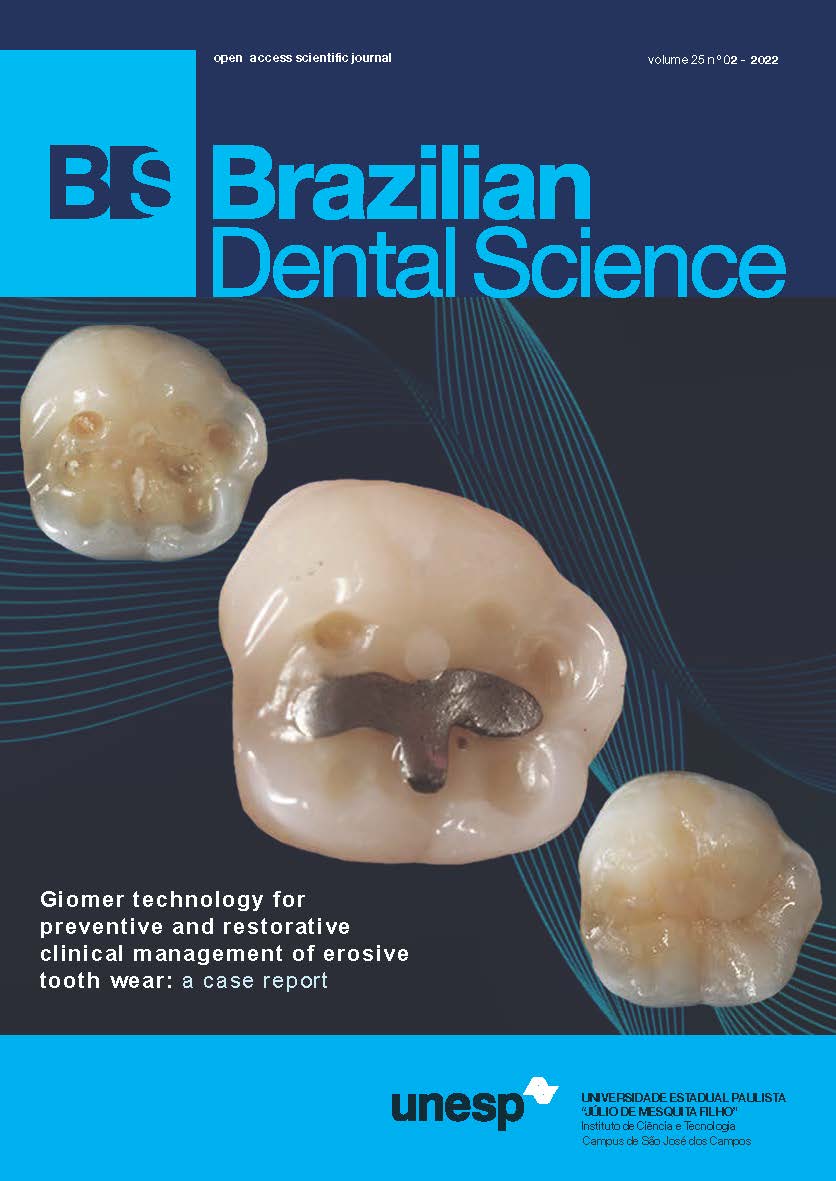Clinical assessment of two inlay-retained bridge designs in missing posterior teeth cases: a Randomized Clinical Trial
DOI:
https://doi.org/10.4322/bds.2022.e2725Abstract
Objective: This study aimed to evaluate the clinical performance of two inlay-retained bridge designs (proximal
shaped and inlay shaped) in single missing posterior teeth cases. Material and Methods: A total of 70 cases
with missing single posterior teeth were included in this study and divided into two groups with a 1:1 allocation
ratio (n = 35 for each group). Group 1 (the control group): this group received an inlay retained bridge with
inlay design on both abutments. Group 2 (the intervention group): this group received an inlay retained bridge
with a proximal box on both abutments. PMMA resin (YAMAHACHI PMMA) was used for the try-in stage and
monolithic zirconia (Katana, Kuraray) was used for the final restorations. The restoration surfaces were treated
using sandblasting and Z-prime S (Bisco) and the cementation was done by using self-adhesive resin cement
(Bisco). Fracture, marginal adaptation, postoperative sensitivity, caries, and gingivitis were assessed using the
modified United States Public Health Service for restoration clinical assessments (MUSPHS standards) over 12
months of follow-up. Results: The results show there was no significant difference between the two groups.
Kaplan-Meier survival curve was constructed to calculate the mean survival estimates of the two groups and we
found that the two groups were clinically successful during a one-year follow-up. Conclusion: Both designs of
inlay retained fixed dental prostheses revealed successful clinical performance in terms of Fracture, marginal
adaptation, postoperative sensitivity, caries, and gingivitis.
KEYWORDS
Fracture; Inlay-retained fixed dental prosthesis; PMMA; Resin cement; Zirconia.
Downloads
Downloads
Published
Versions
- 2022-04-13 (2)
- 2022-04-04 (1)
How to Cite
Issue
Section
License
Brazilian Dental Science uses the Creative Commons (CC-BY 4.0) license, thus preserving the integrity of articles in an open access environment. The journal allows the author to retain publishing rights without restrictions.
=================




























